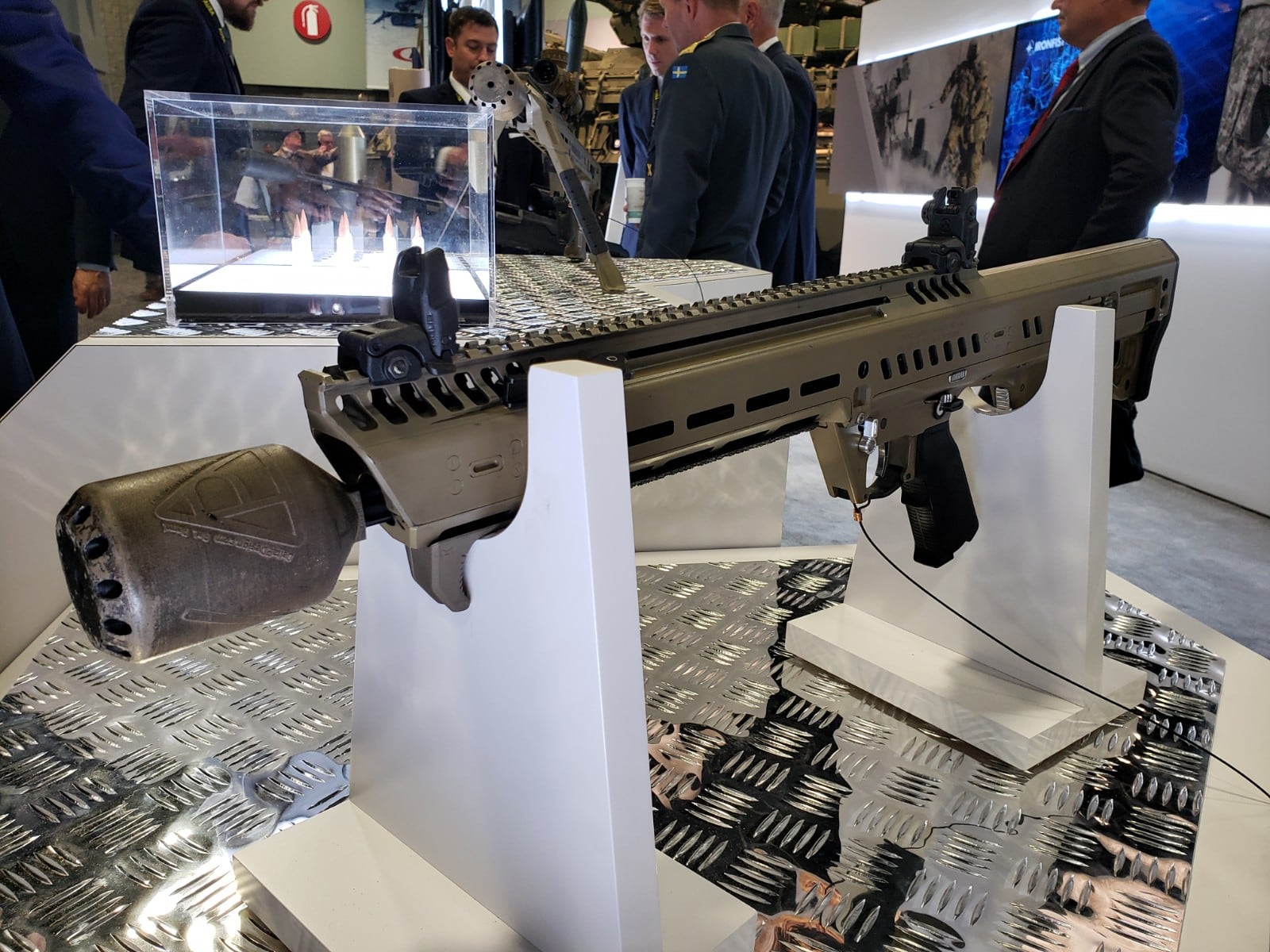General Dynamics Ordnance and Tactical Systems just unveiled its take on the Next Generation Squad Weapon program, and it’s a doozy.
Gear Scout got a look at the Automatic Rifle (replacing the M249 SAW) and Rifle (replacing the M4/M4A1 carbine) prototypes at this year’s Association of the US Army Annual Meeting.
Instead of the M16-style layout the Army has been accustomed to since the 1960s, GDOTS took their prototypes in a different direction with the bullpup configuration — the action and magazine located behind the fire control unit of the rifle.
One of the primary benefits of a bullpup design is a final product that holds a longer barrel in a more compact frame, maximizing the effective range of the 6.8 mm cartridge the rifle uses.

Both of GDOTS’s -AR and -R guns have a charging handle on the left side that can be swapped to the right depending on user preference, as well as ambidextrous controls. A full length 12 o’clock rail, as well as MLOK points on the side faces of the handguard, offer plenty of space for optics and electronics respectively.
The ejection port is located towards the rear of the gun near the stock, and ejects spent casings forward and away while in operation.
In contrast to the Sig and Textron entries for the Automatic Rifle, GDOTS’s -AR gun feeds from what seems to be a 30-round box magazine, instead of a belt. This would place it in a similar role and level of combat functionality to the M27 IAR that the Marine Corps adopted as a partial replacement for the M249 SAW in its fleet infantry units, which also feeds from a 30-round box mag.
An official with Beretta USA, which makes the GD guns, told GearScout the idea for the non-belt-fed automatic rifle was to get back to the philosophy of the WWII-era Browning Automatic Rifle, a 30-06 beast that fired from a box magazine.
As per the program requirements, GDOTS’s guns both come with suppressors. The cans mated to the NGSW-AR and -R guns are both designed and produced by Delta P Designs, and bear a significant resemblance to the company’s unique Brevis II suppressors, originally developed as a more compact alternative to longer and heavier cans.
GDOTS also showcased the new cartridge it hopes the Army might pick up as part of its bid — a composite-cased 6.8 mm round developed by True Velocity in partnership with Beretta and General Dynamics.
While the US Army moving to a bullpup-style rifle seems like a far-fetched idea, it wouldn’t be the first time companies have made overtures to the DoD with prototypes featuring that configuration, now popular with a number of other foreign militaries.
In the late 1980s, the Army’s Advanced Combat Rifle program sought a replacement for the M16A2 with a few next-generation features. Of the finalists, two companies offered bullpup rifles (considerably unconventional for the time).
Heckler & Koch offered the revolutionary G11 K2, a rifle that utilized caseless rounds housed in a magazine attached above the barrel. The Steyr ACR was the second major bullpup prototype evaluated by Army personnel, firing sabotted steel flechettes housed in telescoped cartridges.
Ultimately neither the H&K nor the Steyr products were picked up, and the Army carried on with the M16-platform, eventually moving to the M4 carbine in the mid-1990s.
Now, decades later, bullpups are finally getting a second serious look with GDOTS’s bid for the NGSW program.
Ian D’Costa is a correspondent with Gear Scout whose work has been featured with We Are The Mighty, The Aviationist, and Business Insider. An avid outdoorsman, Ian is also a guns and gear enthusiast.
